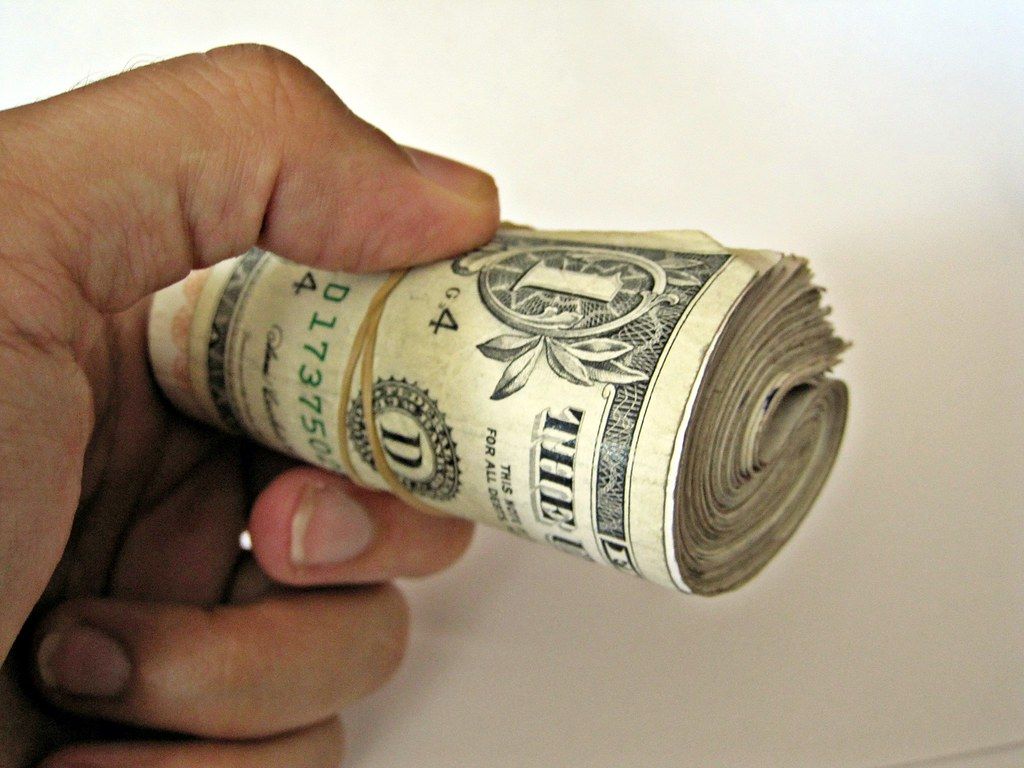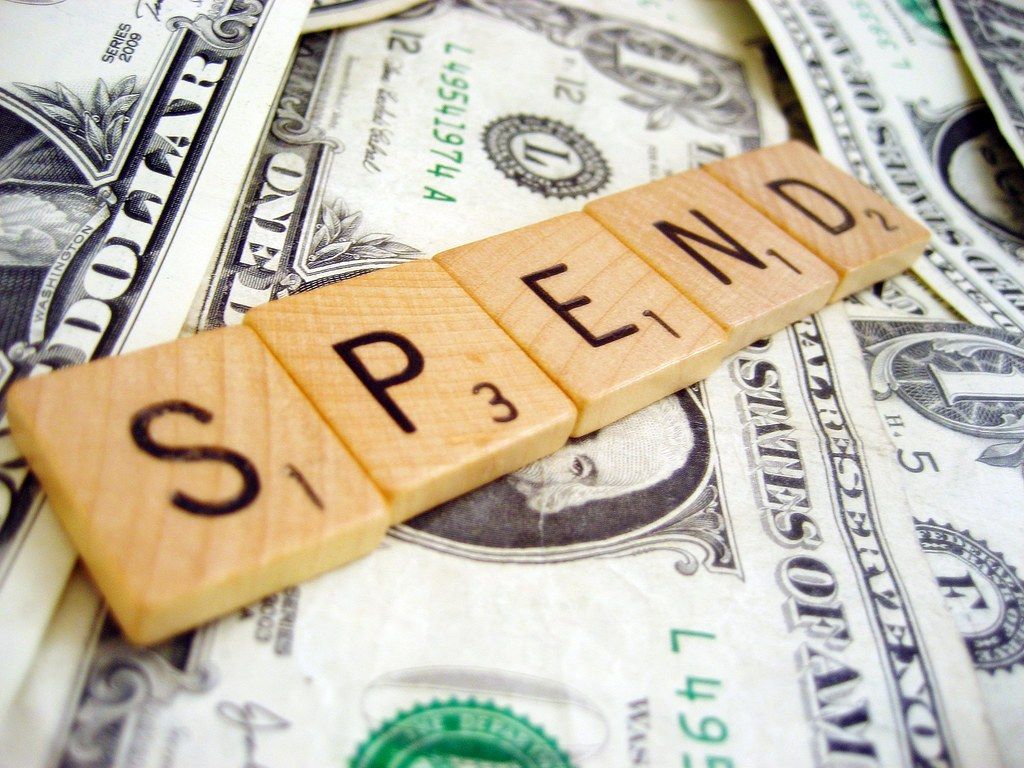
The idea of saving $10,000 in just one year might sound like a monumental task, a lofty goal reserved for financial gurus or those with overflowing bank accounts. But what if I told you it’s not only possible but entirely within your reach? Imagine for a moment what an extra $10,000 could do for your life: a substantial emergency fund, a significant chunk towards a down payment, that dream vacation you’ve always pictured, or even tackling those home improvement projects you’ve put off. The possibilities are truly exciting, and the journey to get there is more straightforward than you might think.
This isn’t about drastic, unsustainable sacrifices that leave you feeling deprived and demotivated. Instead, we’re talking about smart, practical adjustments and a disciplined approach that empowers you to take control of your finances. Saving five figures in 52 weeks requires focus and a willingness to examine your spending habits, but the rewards—both financial and in terms of peace of mind—are immense. We’re here to guide you through a proven set of strategies that have helped countless others achieve similar ambitious targets.
We’ve compiled some of the best possible ways for you to save money, ensuring that your savings account can grow to $10,000 before you know it. This guide is packed with direct, usable tips and strategies that you can implement immediately. Let’s dive into the first half of these powerful techniques, designed to lay a solid foundation for your financial success and get you well on your way to that $10,000 goal. Get ready to transform your financial future!

1. **Set Clear Goals and Create a Detailed Budget**The very first step on your journey to saving $10,000 is to understand your ‘why.’ Why are you embarking on this challenge? Is it for an emergency fund, a specific purchase, or long-term security? Identifying this ultimate goal and keeping it visible will be your compass throughout the year, helping you stay focused and disciplined against spending temptations.
Once your ‘why’ is established, get a clear picture of your current finances. Track your spending, either manually or with an app, to see precisely where every dollar goes. This crucial step reveals your financial landscape and highlights areas for potential cuts. It’s about intentional spending that aligns with your ultimate goal, rather than unintentional outflows.
Part of setting your goals involves creating a concrete budget. To save $10,000 in a year, you’ll need to allocate about $834 into savings each month. Before figuring out how, establish a basic budget categorizing expenses to identify where you can cut back. If high-interest debt is present, prioritize paying it off, as interest costs hinder savings progress.
Read more about: Unmasking the Real Expenses: A Comprehensive Guide to Calculating the True Cost of Owning an Older Home

2. **Break Down Your Goal into Achievable Pieces**Staring at a $10,000 savings target can feel incredibly daunting, even overwhelming. The sheer size of the number might make it seem unattainable, leading to procrastination. However, a powerful psychological trick is to break this large goal into smaller, more digestible pieces, making it feel less intimidating and far more achievable.
Instead of fixating on $10,000, consider what that means quarterly, monthly, or even weekly. To save $10,000 in a year, you need roughly $834 each month, which further breaks down to about $27.40 per day. Finding an extra $27.40 daily through mindful choices suddenly seems much more manageable than conjuring $10,000.
The smaller the number, the easier it feels to achieve. This reframing is largely mind over matter. By consistently hitting these smaller, daily or weekly targets, you build momentum and confidence, reinforcing your belief in your ability to reach the larger goal and preventing burnout.
Read more about: Transform Your Home: Simple Backyard Projects That Instantly Boost Your Curb Appeal

3. **Open a Dedicated High-Yield Savings Account**Once your goals are set, you need a safe and smart place for your accumulating funds. Since saving $10,000 takes time, you want your money working for you. A dedicated high-yield savings account is crucial here, offering a significantly higher annual percentage yield (APY) than standard bank accounts.
While local banks often provide low interest rates (around 0.4% APY, as of 9/15/25, FDIC), many online high-yield savings accounts offer much better returns. For example, some offer 3.80% APY with direct deposit through a SoFi Checking and Savings account or 4.05% APY at EverBank (as of 10/03/25). Researching these higher-yield options is essential.
Opening a *separate* savings account specifically for your $10,000 goal is both a psychological and practical advantage. It makes tracking progress easier and crucially, helps prevent the temptation to spend these funds on unrelated expenses. Look for fee-free accounts with easy money transfer options, allowing you to set up automatic deposits from your checking account or paycheck.
Read more about: Navigating the Market with Ease: A Beginner’s Comprehensive Guide to Index Fund Investing

4. **Automate Your Savings (“Pay Yourself First”)**This tip is a game-changer for serious savers: “Pay Yourself First.” Before paying any bills or spending from your paycheck, prioritize your savings by depositing money directly into your dedicated account. This shifts your financial mindset, making savings a non-negotiable expense.
By making savings your highest priority, you structure spending around what remains *after* your contribution, ensuring your goal is consistently met. Set up automatic transfers for that $834 each month to occur right after you get paid. This transforms saving from effort to effortless, default action.
Even if money is tight initially, a small automatic transfer is a powerful start. Consistency is key. Gradually increase your contributions as your financial situation improves. These automated deposits will accumulate surprisingly fast, propelling you towards your $10,000 goal without constant conscious effort.

5. **Strategically Cut Down on Bills and Recurring Expenses**With your budget established, scrutinize every expense for optimization. Many “fixed” costs hold potential for reduction, directly freeing funds for savings. Print your last bank statement and review each transaction.
Ask three questions for every bill: “Can I negotiate a better rate?” “Can I shop around for a better rate?” and “Can I cancel or cut out this expense completely?” This systematic review can uncover opportunities in areas like cable, electricity, or insurance. A simple call to your insurance agent for new discounts can save hundreds annually.
Don’t overlook subscriptions. Many services are signed up for with good intentions but rarely used. Cutting these can free up significant monthly funds, and you might not even miss them. Tools like Rocket Money or Trim by OneMain can help identify and cancel forgotten subscriptions, or a manual review of your credit card statements will do the trick.
Read more about: Unlock Your Savings Potential: 10 Everyday Latte Factors You Can Conquer to Save $100+ Weekly

6. **Implement Smart Spending Reduction Tactics**Beyond recurring bills, everyday spending habits significantly impact your ability to save. For most, reducing discretionary spending is essential to hitting the $10,000 goal. This involves mindful and strategic purchasing, not constant deprivation.
One powerful tactic to avoid impulse buys is the “24-hour rule.” When you see something you want, wait a full day. This cooling-off period lets you assess genuine need versus momentary desire, often making the urge to buy pass and saving you money.
For online shopping, remove stored credit card information. One-click checkout makes impulse buying too easy. Manually entering your card number introduces friction, deterring mindlessly clicking on items. Simple habits like bringing lunch to work or making coffee at home also add up to substantial annual savings.
Read more about: Unmasking the Truth: 10 Costly Retirement Lies You Need to Stop Believing for a Secure Future

7. **Optimize Your Food Budget for Maximum Savings**Food is a major variable expense and thus a huge savings opportunity. Eating out is expensive; cooking at home and using leftovers saves at least $100 a month, often more. These meals out then become special treats rather than routines.
Smart grocery shopping is key. Make a weekly meal plan and stick to it, preventing aimless shopping and food waste. Buy in-season fruits and vegetables for better prices and taste. Choose store brands over name-brands for comparable quality at a lower cost, putting those savings directly into your goal.
To curb impulse shopping, order groceries online for pickup or delivery, sticking strictly to your list. If shopping in-store, only visit necessary aisles. Finally, utilize rebate apps like Fetch Rewards or Ibotta to earn extra money or gift cards on regular grocery purchases.
Accelerating Your Savings: The Next 7 Powerful Strategies
You’ve laid the groundwork, tackled your initial expenses, and established a solid savings routine. Now, it’s time to shift gears from foundational saving to accelerating your progress, tapping into more dynamic strategies that will significantly boost your journey to $10,000. These next steps are all about optimizing your income, making smart choices with unexpected money, and ensuring your financial discipline is sustainable for the long haul. Get ready to amplify your savings!
Read more about: Insider Secrets Revealed: Your Ultimate Lifehacker Guide to Unlocking Maximum Savings at Costco and Sam’s Club

8. **Leverage Unexpected Income and Windfalls**Sometimes, life surprises us with extra cash that wasn’t part of our regular budget. This unexpected money, often called a windfall, presents a golden opportunity to fast-track your savings. Instead of seeing it as an excuse for a splurge, view it as a direct deposit into your $10,000 goal.
Good examples of these windfalls include tax refunds, cash gifts from birthdays or holidays, or even bonuses from work. While it’s tempting to use these funds for immediate gratification, resisting that urge and directing them straight into your dedicated savings account can make a substantial difference in reaching your target faster.
Ideally, your monthly savings plan should be robust enough that you don’t *need* these windfalls to hit your $10,000 goal. However, when they do occur, they act as powerful accelerants, potentially helping you reach your target well ahead of schedule or making up for any months where you might have fallen a little short.
Read more about: Unlock Thousands in Savings: Homeowners’ Ultimate Guide to Smart Mortgage Payment Hacks

9. **Start a Side Hustle**There’s a natural limit to how much you can cut from your spending without feeling deprived. If you’ve optimized your budget and still find yourself short of your $834 monthly savings goal, increasing your income is the next logical step. This is where a side hustle can become your secret weapon.
A side hustle is essentially a part-time job that you take on in addition to your primary employment, often allowing for flexible hours and the ability to work from home. The beauty of a side hustle is that all (or most) of the income generated can be channeled directly into your savings, dramatically speeding up your progress.
Think about what skills you possess or services you could offer. Examples range from freelance writing or selling crafts to providing services like Uber/Instacart, dog walking, pet sitting, or babysitting. Websites like Care.com or Sittercity can help you connect with opportunities for the latter. Remember, this doesn’t have to be a permanent commitment; even a few months of dedicated side-hustle income can give your savings a significant boost toward your $10,000 goal.
Just remember to keep diligent records of your earnings from any side hustle. You’ll need to report this income and pay the necessary taxes at the end of the year. Factoring this into your financial planning is part of being resourceful and responsible on your savings journey.
Read more about: Mastering the ‘Side’ Game: 12 Zero-Investment Concepts for Unleashing Your Potential

10. **Generate Passive Income Streams**Beyond actively working a side hustle, another powerful income-boosting strategy is to set up passive income streams. Imagine earning money without constantly trading your time for it – that’s the dream of passive income, and it can be a huge ally in hitting your savings target.
Passive income refers to sources of earnings that, once set up, require minimal ongoing maintenance to generate revenue. While the initial effort to establish these streams can be significant, the long-term benefit of money flowing in while you focus on other things is incredibly valuable. This can substantially accelerate your $10,000 savings.
Examples include things like advertising on a blog if you have one, or even renting out extra rooms in your home through platforms like Airbnb. These are just a couple of avenues where an initial investment of time or resources can lead to a steady, low-effort income, directly contributing to your savings goal.
While passive income may take time to cultivate, it’s a strategic move for long-term financial growth and can be particularly effective in accumulating significant savings. Consider what assets or skills you possess that could be leveraged to create such a stream, transforming your financial landscape.
Read more about: Beyond the Balance Sheet: 12 Billionaire Investment Strategies to Forge Generational Wealth

11. **Put All Your Spare Change Into Savings**Sometimes, the simplest strategies are the most effective. This particular tip is a fantastic example of accumulating significant savings without feeling any extra effort: consistently putting all your spare change into your savings account. It’s a small habit that can deliver surprisingly big results, potentially adding $500 or more to your savings in a year.
The concept is straightforward: every time you make a purchase, round up to the nearest dollar and deposit that difference into your dedicated savings. Many banks, like Bank of America, offer automated programs that do this for you, rounding up debit card purchases and transferring the difference. It’s worth asking your bank if they provide a similar service.
If automated rounding isn’t an option, you can still implement this manually. Consider using the cash envelope system for everyday spending, then collect any loose change at the end of the day or week and deposit it. Alternatively, keep a running tally of your rounded-up amounts in a notebook or spreadsheet, and make a weekly or monthly transfer to your savings account. This ‘old school’ method works just as well.
This method leverages small, almost unnoticeable amounts that, through consistent application, compound into meaningful contributions to your $10,000 goal. It’s a painless way to boost your savings without having to drastically alter your spending habits in other areas.
Read more about: Your Ultimate Guide to Unlocking Massive Savings: The Best Online Deal Sites and Shopping Tools

12. **Explore Swapping and Bartering**Cutting down on new purchases doesn’t always mean going without. A clever way to acquire items you need or want, and save money simultaneously, is to participate in swapping or bartering groups. This strategy is all about leveraging communal resources and connections to avoid direct monetary outlays.
Look for swap groups in your local community, often found through social media or community centers. These groups facilitate the exchange of gently used items, from children’s clothes and baby gear to household appliances that are no longer needed. You can offer items you no longer use in exchange for things you need, creating a win-win situation for everyone involved.
Beyond formal groups, consider organizing swaps among your friends or family members. Perhaps a friend has a cooking appliance they rarely use that you could put to good use, while you might have some gardening tools they’re looking for. The more people who participate, the wider the variety of items available for exchange, and the greater your potential savings.
This method not only saves you money but also promotes sustainability by extending the life of products and reducing waste. It’s a resourceful approach to consumerism that directly helps you keep more money in your pocket, propelling you closer to your $10,000 savings target.

13. **Budget for “Fun Money” (Strategically)**While the goal is to save aggressively, it’s crucial to avoid cutting out *all* discretionary spending. Complete deprivation can lead to burnout, resentment, and ultimately, a higher likelihood of abandoning your savings goal altogether. The key is to budget for “fun money” strategically and mindfully.
Instead of eliminating fun, redefine it. Allocate a specific, reasonable amount of money each month that is solely for entertainment or non-essential treats. This ensures you still have some flexibility and can enjoy life without feeling overly restricted. Having this buffer makes the entire savings process more sustainable and positive.
If you find yourself constantly battling the urge to splurge, remember that life is about balance. You can still cut back significantly on overall fun expenses by choosing cheaper or free activities. Think picnics in the park instead of expensive dinners, or a movie night at home instead of the cinema. These small adjustments still allow for enjoyment without breaking the bank.
This disciplined approach to budgeting for fun money also allows for delayed gratification. You could save up your designated “fun money” for a few months and then splurge on one really meaningful experience or item. This approach often leads to greater satisfaction than frequent, small, unmindful purchases, reinforcing your financial discipline while still allowing you to enjoy the fruits of your labor.

14. **Regularly Review and Adjust Your Budget & Track Progress**Your financial journey isn’t a static one-time setup; it’s a dynamic process that requires ongoing attention. One of the most critical habits for achieving and maintaining financial success, especially with an ambitious goal like saving $10,000 in a year, is to constantly review and adjust your budget and meticulously track your progress.
Things will inevitably come up throughout the year: unexpected medical bills, car repairs, or perhaps a desire to spend a little extra on a special gift. Your budget should be a fluid, living document, not a rigid constraint. Regularly revisiting it allows you to make necessary adjustments without derailing your entire savings plan. This flexibility makes you more likely to stick to your budget and achieve your goal.
Tracking your savings progress provides invaluable motivation. It transforms an abstract goal into a tangible achievement, showing you exactly how far you’ve come. Whether you use budgeting apps, spreadsheets, or even a visual tracker like a free printable savings goal page where you color in a box for every $100 saved, seeing your progress unfold can be incredibly empowering and reinforce your commitment.
Make it a habit to evaluate where you stand each month. Are you on track to hit your $834 monthly target? If not, where can you cut back further or potentially earn more? This proactive approach ensures you can change course if you start to fall behind, keeping your $10,000 goal firmly within reach. Consistent tracking and thoughtful adjustments are the hallmarks of successful saving.
Read more about: Navigating the Evolving Landscape: New Rules for Student Loan Forgiveness in 2025
Saving $10,000 in a single year is a testament to what’s possible when you combine clear goals with practical strategies and unwavering dedication. It’s not just about the money; it’s about building financial resilience, gaining peace of mind, and empowering yourself to make your dreams a reality. By embracing these actionable tips, from optimizing your spending to boosting your income and consistently tracking your progress, you’re not just saving money – you’re building a stronger, more secure financial future. Your $10,000 is well within reach, and the discipline you cultivate along the way will serve you for years to come.



